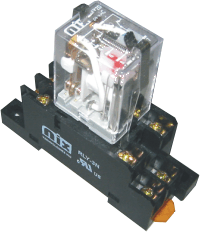john37 said:
I'm still a little confused by when you would use a contactor and when you would use a relay
In
general relays are physically small low, capacity devices often (but not always) limited to about 15 amps of current.
The operating coil draws little current and the coil voltage may be 5 volts to 600 volts AC or DC
A contactor on the other hand is large, robust, and can be purchased with very high current ratings. The largest I work with are in the 600 Volt 400 amp range.
The coil current on contactors is much higher and as the size increases so does the operating voltage of the coil.
You will not likely find a 225 amp lighting contactor available with a 24 VAC coil., the coil voltage will be 120 VAC or higher.
By the way the 'coil' is what you energize to operate the relay or coil.
and how you would know when to use a normally open or normally close contactor.
That is a large question.
Here are a quick two examples.
1) You want to shut down a bunch of equipment when the fire alarm operates. This would be a good application for normally open contactors as when they fail they will fail open meaning the load will shut down.
2) You want to be able to turn on a load under emergency conditions, say lighting in a auditorium. This would be a good application of normally closed contactors. If normally closed contactors will fail closed or ON.
Many contactors now come with reversible contacts so if you look at this ASCO 12 pole contactor
you see 12 single pole contacts, I can make some normally open and some normally closed.
It is all about flexibility in design.
Keep asking whatever questions you want, I happen to work with contactors all the time so it's not that I am particularly bright, just experienced.






